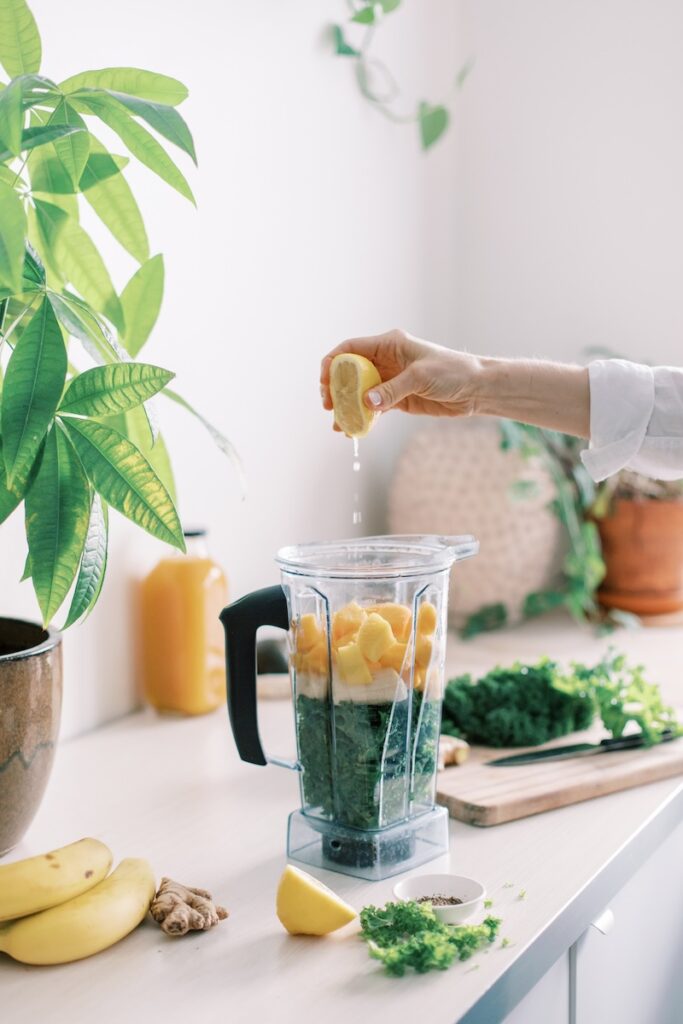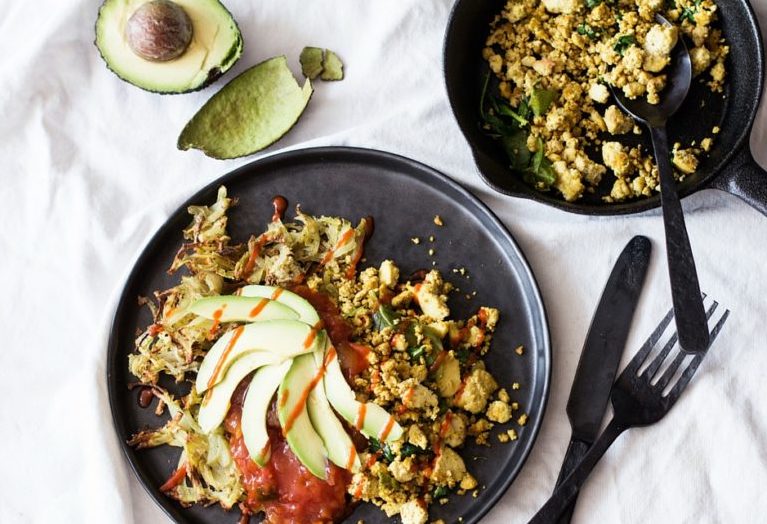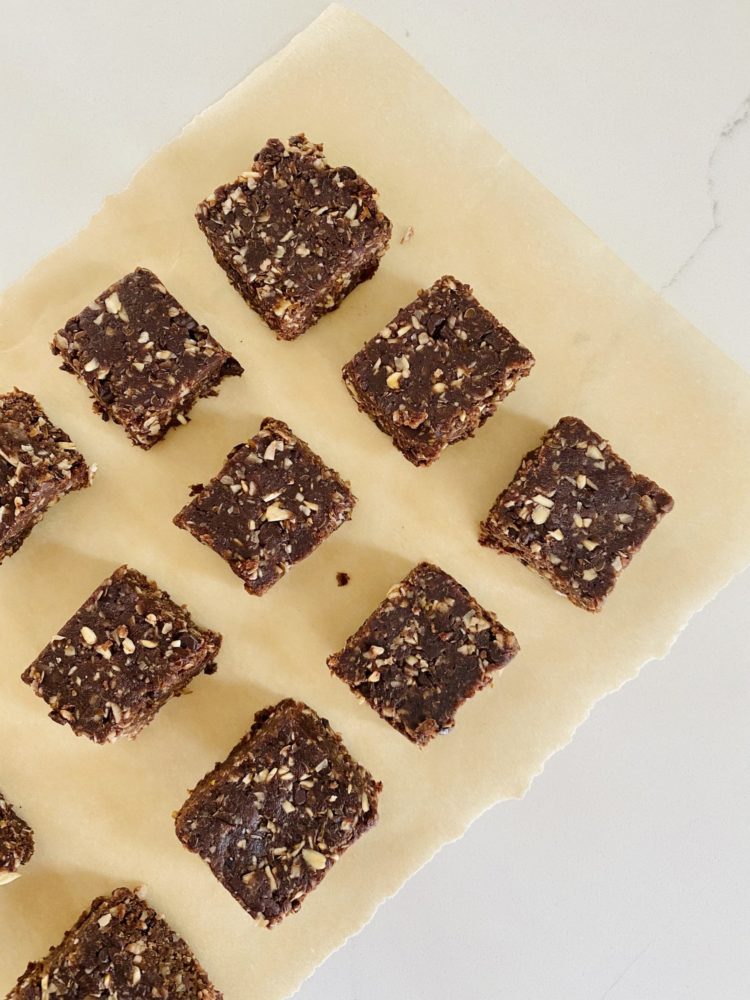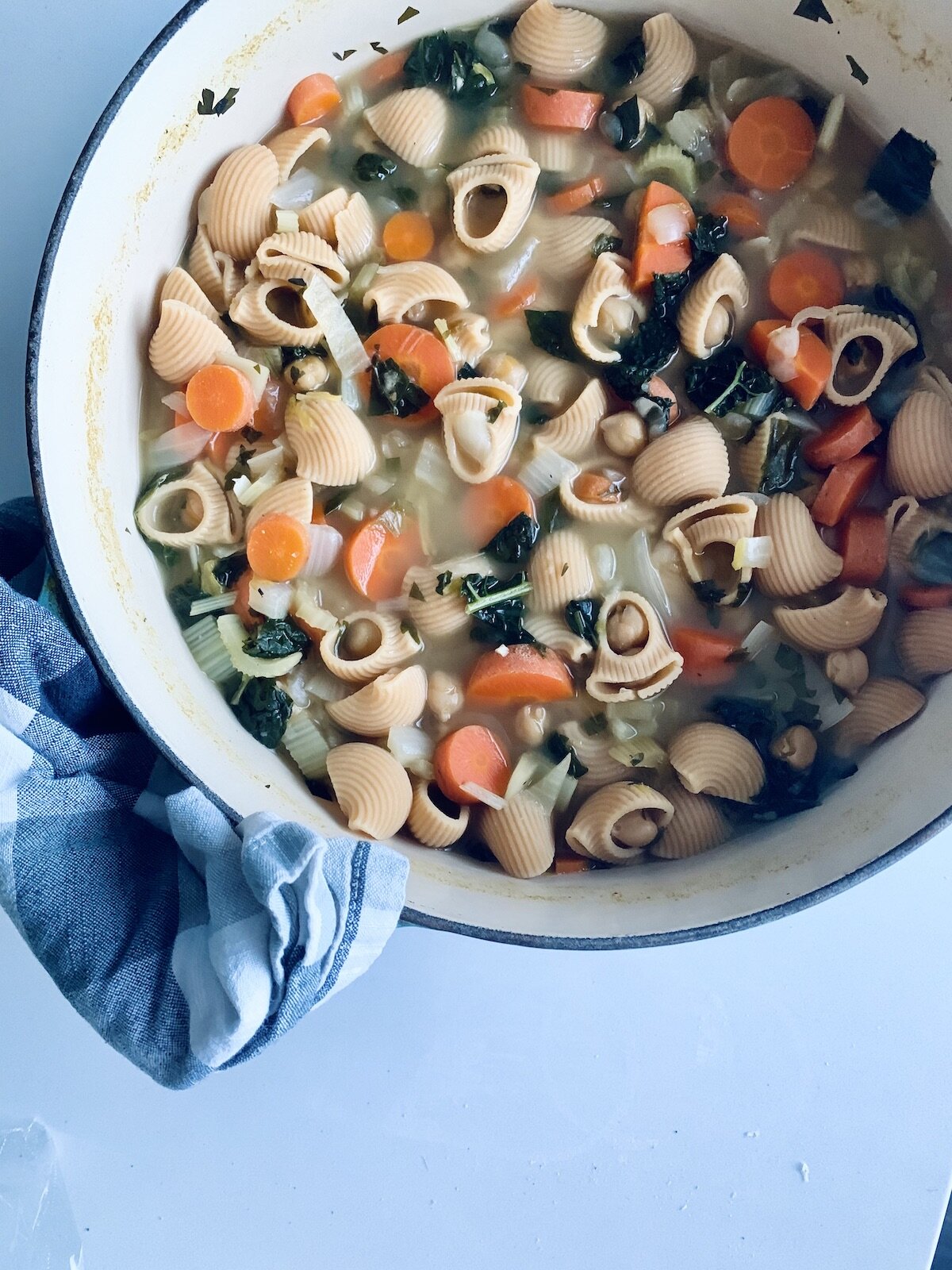Iron is an important nutrient for plant-based women to know about. It’s critical to health and energy, and women’s iron needs are 50% higher than men’s at certain phases of her life. In this complete guide for iron for vegetarians and plant-based women, you’ll learn where to find iron and how to get enough from plants.

Why is iron important for women?
Iron plays a role in our blood’s ability to transport oxygen throughout the body and in our immune function. Women’s iron needs fluctuate throughout life with menstruation, pregnancy, and menopause, so it is important for women to be aware of their needs as they change. Premenopausal women, pregnant women, and women in endurance sports like running are at highest risk for iron deficiency.
Here are some of the key roles iron plays in women’s health:
- Energy Production: Iron is a core component of hemoglobin, the protein in red blood cells responsible for transporting oxygen throughout the body. Sufficient iron levels ensure that your body can effectively deliver oxygen to tissues and organs, thus helping to maintain energy levels. Inadequate iron can lead to fatigue, lethargy, and decreased physical performance, particularly for women who are physically active or engaged in endurance sports.
- Menstruation and Iron Loss: Premenopausal women face regular iron loss due to menstruation. The monthly cycle can deplete iron stores, and if these are not replenished through diet, it can lead to iron deficiency anemia. Women experiencing heavy menstrual bleeding, known as menorrhagia, may require even more attention to their iron intake.
- Pregnancy and Development: During pregnancy, a woman’s iron requirements increase significantly to support the growing fetus and the expansion of maternal blood volume. Iron is essential for fetal development and preventing complications.
How much iron do vegan women need?
Women’s iron needs are almost twice that of men since women lose blood (and therefore iron) through menstruation, and needs increase even more during pregnancy as a woman’s blood volume expands. The heaviness of a woman’s period also impacts how much iron replenishment she needs.
Iron recommendations are based on diets that include animal foods (heme iron). Because plant-based iron (non-heme iron) is less readily absorbed than heme iron, it’s likely that the iron needs for vegetarians and plant eaters is a little higher. The recommendations below includes standard recommendations, so if you are vegan, you may want to aim a little higher with your iron intake.
The Recommended Dietary Allowance (RDA) for iron varies by age, gender, and life stage. Here’s a basic overview:
- Women aged 19-50 years: 18 mg/day
- Women aged 51 years and older: 8 mg/day
- Pregnant women: 27 mg/day
- Breastfeeding women: 9-10 mg/day
Recommended Intake for Vegans
The general advice for vegan women is to aim for an additional 50% more iron than the typical RDA. Let’s put that into context: if you are a premenopausal vegan woman, your target daily iron intake might be around 27 mg. If you are a pregnant vegan, your target is approximately 40 mg per day. That’s a lot of extra iron! So, do you really need to aim that high? Probably not. This recommendation is based on the worst case scenario – a diet with a lot of iron inhibitors and very few iron enhancers. Read on to learn how you can help boost your iron absorption as a vegan.
Factors Influencing Iron Absorption
It’s not just about how much iron you consume; the way your body absorbs it also plays a crucial role. Several factors can affect iron absorption, especially for vegetarians and vegans who rely on non-heme iron from plant-based sources. Here are key considerations:
1. Type of Iron: Heme vs. Non-Heme
Heme iron, found in animal products, is more bioavailable, meaning your body can absorb about 15-35% of it. In contrast, non-heme iron from plant sources has a lower absorption rate of approximately 2-20%. This actually may be a good thing since heme iron and excess iron stores have been linked to some health conditions. Non-heme iron may be easier for your body to regulate. For vegetarians, focusing on enhancing the absorption of non-heme iron is essential.
2. Vitamin C Intake
Vitamin C boosts the absorption of non-heme iron significantly. Including vitamin C-rich foods in your meals, such as citrus fruits, berries, bell peppers, and tomatoes, can help improve iron uptake. For example, pairing a spinach salad with orange segments can enhance the iron content’s bioavailability.
3. Inhibitors of Iron Absorption
Certain foods can inhibit iron absorption. Compounds such as phytates (found in whole grains and legumes), calcium supplements, and polyphenols (present in coffee and tea) can impede the absorption of non-heme iron when consumed at the same time.
A closer look at these inhibitors:
- Phytates: These are naturally occurring compounds found predominantly in whole grains, legumes, nuts, and seeds. While they have many health benefits, phytates can bind to iron and reduce its bioavailability. Soaking, sprouting, or fermenting these foods can help decrease phytate levels and thus improve iron absorption.
- Calcium: This mineral is essential for bone health and is abundant in dairy products, fortified plant milks, and leafy greens. However, high doses of calcium can compete with iron for absorption, particularly when consumed in the same meal. To optimize iron intake, try to consume high doses of calcium, like calcium supplements, separately from iron-rich meals.
- Polyphenols: Found in tea, coffee, and red wine, polyphenols can inhibit non-heme iron absorption by forming insoluble complexes with iron. If you enjoy tea or coffee, consider waiting an hour or two after meals, allowing your body to absorb iron effectively.
Recommended Iron Needs for Women

Is iron deficiency more common in vegan and vegetarians?
Iron deficiency is a common concern for plant-based women, largely because we’ve been conditioned to associate iron with red meat. But, is it something you should worry about?
Iron status is determined by measuring ferritin in the blood. On average, vegetarians do tend to have lower ferritin levels compared to meat-eaters. However, average iron levels are not low enough to indicate deficiency. In other words, even though ferritin levels tend to be lover in vegans and vegetarians, iron deficiency is not more common.
While it’s certainly important for plant-based women to pay attention to iron, it is worth noting that some research suggests that slightly lower iron levels may offer protective benefits against certain diseases.
Sub-groups of plant-based women that may be at higher risk of deficiency include premenopausal women, especially those with heavy periods, endurance athletes, and pregnant women.
In summary, iron deficiency is not more common among vegans and vegetarians, but it’s still valuable to be aware of your iron levels. Including plenty of iron-rich plant foods and checking iron levels can help meet needs for women eating plant-based diets.
What are the symptoms of low iron in vegetarians?
How do you know if you have low iron? The best way to know is to get your ferritin levels checked. In addition, here are some common symptoms associated with low iron levels:
- Fatigue and Weakness: One of the most common symptoms of iron deficiency is a persistent feeling of fatigue or weakness. This occurs because low iron levels mean that the body is not producing enough hemoglobin to transport oxygen effectively, leading to decreased energy levels.
- Pale Skin and Gums: Individuals with low iron may notice that their skin appears paler than usual, especially in areas like the face, palms, and lining of the eyes. This paleness results from a reduced amount of red blood cells.
- Shortness of Breath: As iron levels dip, oxygen delivery to the body’s tissues becomes less efficient. This can lead to experiencing shortness of breath during physical activity or even at rest, as the body struggles to meet its oxygen demands.
- Dizziness or Lightheadedness: Low iron levels can cause dizziness or lightheadedness, particularly when standing up quickly or after exertion. This is due to decreased blood flow and oxygen supply to the brain.
- Cold Hands and Feet: Poor circulation stemming from low iron levels may lead to feelings of coldness in the extremities. Individuals may notice that their hands and feet are frequently colder than normal.
- Brittle Nails and Hair Loss: Iron deficiency can affect the health of nails and hair, leading to brittle nails that chip easily and hair that may thin out or fall out more frequently than usual.
- Restless Legs Syndrome: Some people may experience an uncomfortable urge to move their legs, especially at night. This condition, known as Restless Legs Syndrome, can be linked to iron deficiency.
- Headaches: Frequent headaches can occur as a result of low iron levels, due to decreased oxygen flow to the brain.

How do vegetarians get iron?
You may be surprised to learn that plenty of plant-based foods contain iron! With a little planning, plant-based women can easily meet their iron needs. Here are a few tips to help you boost your intake of iron, enhance the absorption of iron, and get enough of this essential nutrient.
Focus on Iron-Rich Plant Foods:
Incorporate a variety of iron-rich foods. Some excellent plant-based sources of iron include:
- Legumes: Beans and lentils are not only rich in iron but also provide protein and fiber.
- Nuts and Seeds: Almonds, pumpkin seeds, and sunflower seeds are great snacks that can enhance iron intake.
- Leafy Greens: Spinach, kale, and Swiss chard are rich in iron and can be added to salads, smoothies, or cooked dishes.
- Whole Grains: Quinoa, oats, and brown rice are good sources of iron and can serve as a base for many meals.
- Potatoes: Particularly the skin, potatoes can contribute to your daily iron intake.
Pair Foods for Better Absorption:
While iron from plant sources can be less easily absorbed, certain dietary strategies can enhance its bioavailability. Consuming vitamin C-rich foods alongside iron-rich meals can significantly improve absorption. For instance, pairing spinach with orange slices, adding bell peppers to a bean salad, or enjoying lentils with tomatoes can optimize iron intake.
Cook with cast iron:
Cast iron cookware can actually boost the iron content of food by as much as 16%! This is especially true for acidic foods like tomatoes. Consider cooking with cast iron cookware (I love Lodge brand).
Be Mindful of Iron Inhibitors:
Certain foods and beverages can hinder iron absorption. Tannins in tea and coffee, calcium in dairy products and supplements, and phytates found in whole grains and legumes can inhibit iron uptake when consumed in large quantities. To maximize iron absorption, it’s best to consume these items separately from iron-rich meals.
Consider Iron Fortified Foods:
Many vegetarian products, such as cereals and plant-based milk, are fortified with iron. Including these fortified foods can help bridge the gap in iron intake, especially for those who may struggle to consume enough iron-rich foods.
Check iron levels:
It may be a good idea to get your iron levels checked, especially if you experience symptoms of iron deficiency or are at higher risk. A registered dietitian skilled in plant-based nutrition can help you create a personalized plan for meeting needs and guide iron supplementation if needed.
Best Sources of iron for vegetarians and plant-based women
Iron for vegetarians and plant eaters is a misunderstood topic. Many people assume that because animal foods are so concentrated with iron, they must be the best sources, but this isn’t true. The type of iron found in plant-based foods (non-heme iron) may actually be a safer type of iron than the type found in animal products (heme iron). The body can regulate non-heme iron but not heme iron, and too much heme iron is linked to heart disease and certain types of cancers. Adequate plant-based iron is also associated with normal ovulation and fertility.
Many plant-based foods are rich sources of non-heme iron, but some plant foods also contain a compound called phytate that interferes with iron absorption. Vitamin C has the power to free iron from phytate and increase iron absorption. Because of this, iron-rich plant-based foods should be eaten along with vitamin C-rich foods to help boost absorption. See below for a list of vitamin C-rich foods.
The best iron-rich vegan foods:
- Almonds (1.0 mg per ounce)
- Blackstrap molasses (3.5 mg per tablespoon)
- Broccoli (0.7 mg per cup, cooked)
- Beans, including kidney beans, black beans, and chickpeas (varies, about 3.9 mg per cup, cooked)
- Bok choy (0.8 mg per cup, cooked)
- Cashews (1.9 mg per ounce)
- Dark chocolate (3.3 mg per ounce)
- Dried figs (1.0 mg per half cup)
- Raisins (1.2 mg per ounce)
- Edamame (3.5 mg per cup, cooked)
- Kale (1.2 mg per cup, cooked)
- Lentils (6.6 mg per cup, cooked)
- Peanuts (1.0 mg per ounce)
- Peas (1.2 mg per cup, cooked)
- Pistachios (1.1 mg per ounce)
- Pumpkin seeds (4.2 mg per ounce)
- Spinach (6.4 mg per cup, cooked)
- Sunflower seeds (1.5 mg per ounce)
- Tofu (3.4 mg per half cup)
- Iron-fortified foods like breakfast cereals
How to boost iron absorption with vitamin C
Combining iron-rich foods with vitamin C sources can boost iron absorption by as much as 7%. Here are some of the best vitamin C-rich foods and some iron + vitamin C food pairings.
Best sources of vitamin C that enhance iron absorption:
- Bell peppers
- Broccoli
- Brussels sprouts
- Carrots
- Cabbage
- Cauliflower
- Citrus fruits (grapefruit, oranges)
- Kale
- Kiwi
- Strawberries
- Tomatoes
Favorite ways to pair iron and vitamin C:
- Spinach + Citrus fruits (Blender Green Juice)
- Beans + Tomatoes (Three Bean Chili)
- Chickpeas + carrots (Chickpea Noodle Soup)
- Cocoa powder + Strawberries (Vegan Chocolate Mousse)
- Tofu + Bell peppers (Easy Tofu Scramble)
- Oatmeal + Berries (Baked Oatmeal)
Takeaways: Final tips to get enough iron for vegetarians and plant eaters
- Eat vitamin C-rich foods at every meal to enhance iron absorption
- Tea and coffee can inhibit absorption, so drink them before or after meals instead of during
- Calcium supplements can also inhibit iron absorption, so do not take them with meals
- Prepare meals in cast-iron cookware to boost iron content
- If you have high iron needs (pregnancy, heavy periods, endurance sports), get your iron levels checked and consider an iron supplement
BTW, you might also like The Complete Guide To Plant-based Benefits For Women and Calcium Needs For Women.


